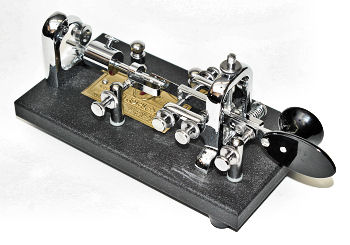Electronics History: The Digi-Key Corporation and Ham Radio
While stubling around Wikipedia the other day, I came to the entry about the Digi-Key Corporation. Digi-Key is now the fifth largest electronics distributors in the country. I have ordered from them many times for both personal and business purchases. The following bit in the Wikipedia article caught my eye:
Ronald Stordahl founded the company in 1972 and its name is a reference to the “Digi-Keyer Kit”, a digital electronic keyer kit that he developed and marketed to amateur radio enthusiasts. He continues to privately own the company.[2]
To verify this I followed the footnote (link left intact in the quote above). This took me to the Digi-Key history page on the Digi-Key website. Sure enough:
It was Dr. Ronald A. Stordahl’s interest in ham radio that provided the springboard for what has become Digi-Key Corporation today.
While in college he assembled and began selling a digital electronic keyer kit for sending radiotelegraph code for ham radio operators. It was called the Digi-Key.
After obtaining his PhD in Electrical Engineering from the University of Minnesota, Stordahl returned to his hometown of Thief River Falls, Minnesota. The keyer kit was discontinued and he began selling electronic components in 1972. The Digi-Key “Keyer” is long gone, but Digi-Key Corporation has become one of the fastest growing electronic component distributors in the world.
Further searching took me to an article about Digi-Key CEO Mark Larson on the Radio-Electronics.com Website:
Can you tell us a little of how Digi-Key started?
The real beginning of Digi-Key was about 1969. Ron Stordahl was a Ham Radio enthusiast and, while a graduate student at the university, developed an electronic keying device for sending Morse code which utilized integrated circuits and other electronic components. He decided to sell this device in the form of a kit to other Ham Radio hobbyists. The kit included the components and an etched circuit board on which one could solder the components. He advertised this kit as the “Digi-Keyer.” Although he sold a reasonable number of kits, he sold far less “Digi-Keyers” than he had planned. He decided to stop selling this kit, but was committed for many components for kits that were never sold. In an effort to recover his cost for these excess parts, he decided that he would try to sell them by advertising in magazines. This marked the beginning of Digi-Key Corporation in 1972 as a distributor of electronic components. With a modest inventory, Stordahl expanded his marketing plan to supplement magazine advertising with Digi-Key’s one-page, typewritten, and mimeographed “catalogue.”
(Published from DFW, Texas)
Newer (than below) Editor’s Note (12/5):
My friend Ron Kritzman pointed me toward an article in the 1968 QST on page 22 titled “An Integrated-Circuit Electronic Keyer” by Richard Halvorson WØZHN and Ronald Stordahl (then-KØUXQ). Still no picture of the Digi-Keyer.
Editor’s Note: I tried to find a picture of the original Digi-Keyer Kit. All I found was a product from MicroHam, of which I am reasonably sure it wasn’t Stordahl’s design since it has USB. If anybody has one of these original kits, or at least a photograph, let me know, I’d like to add a picture.

